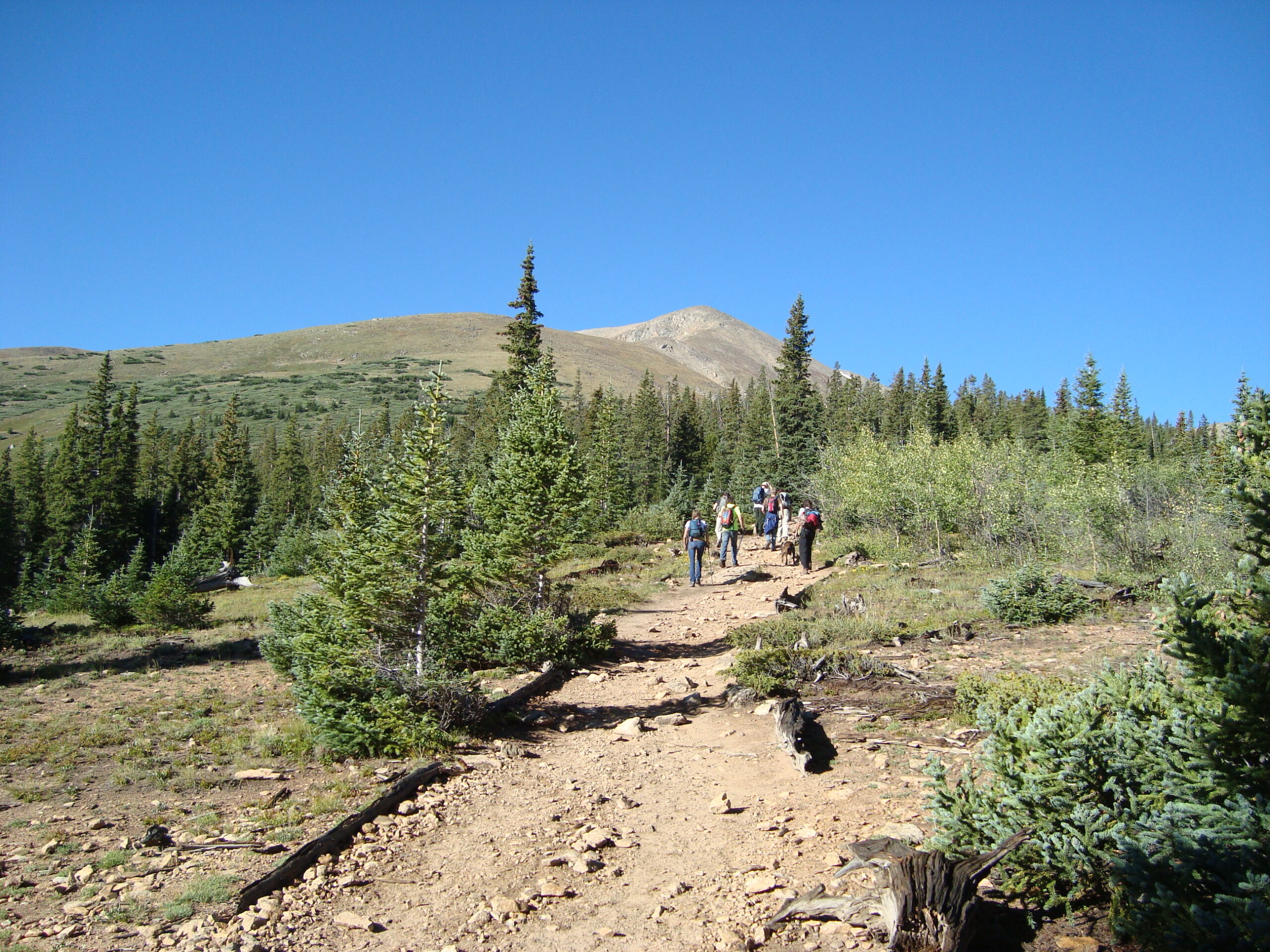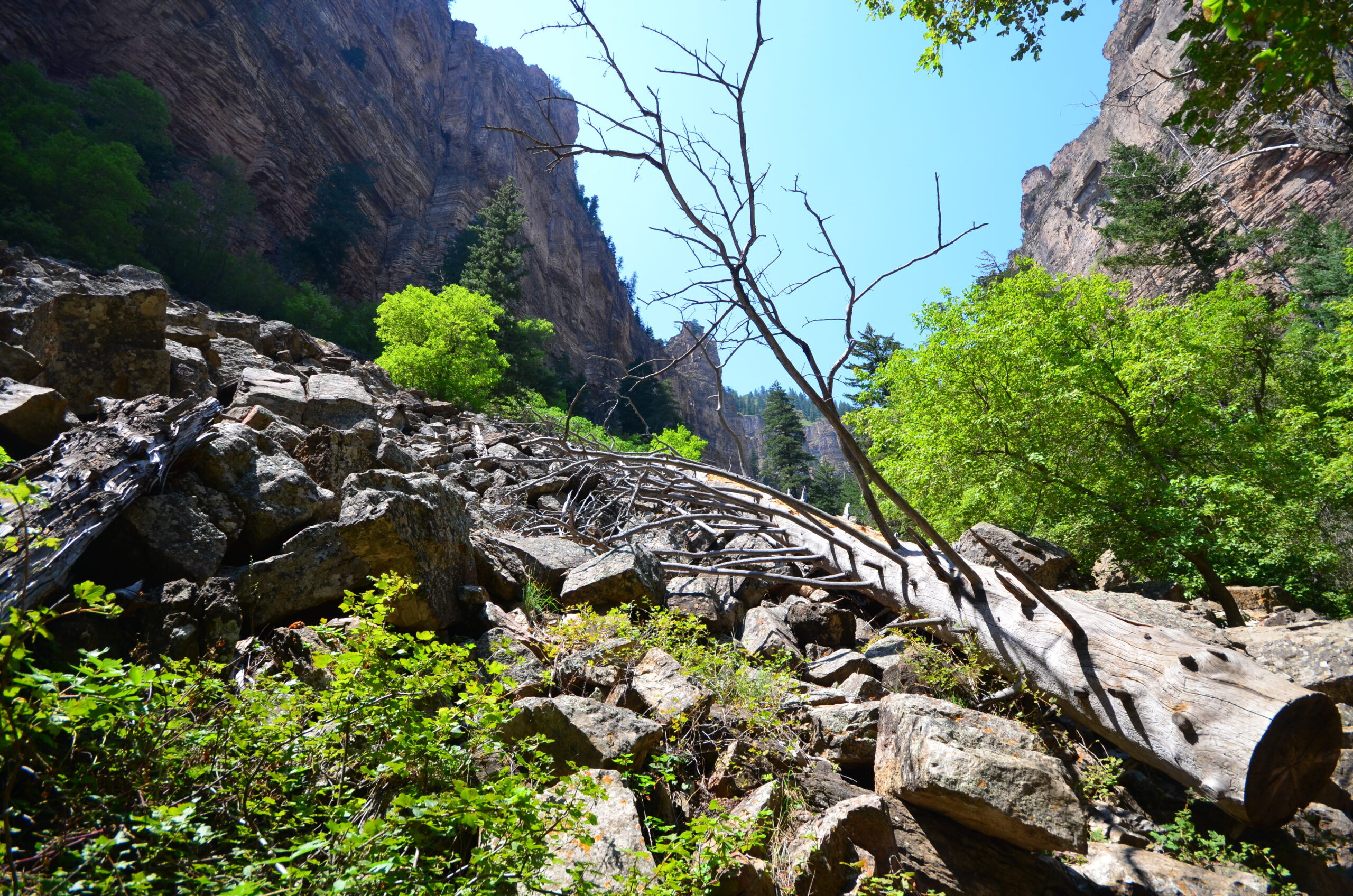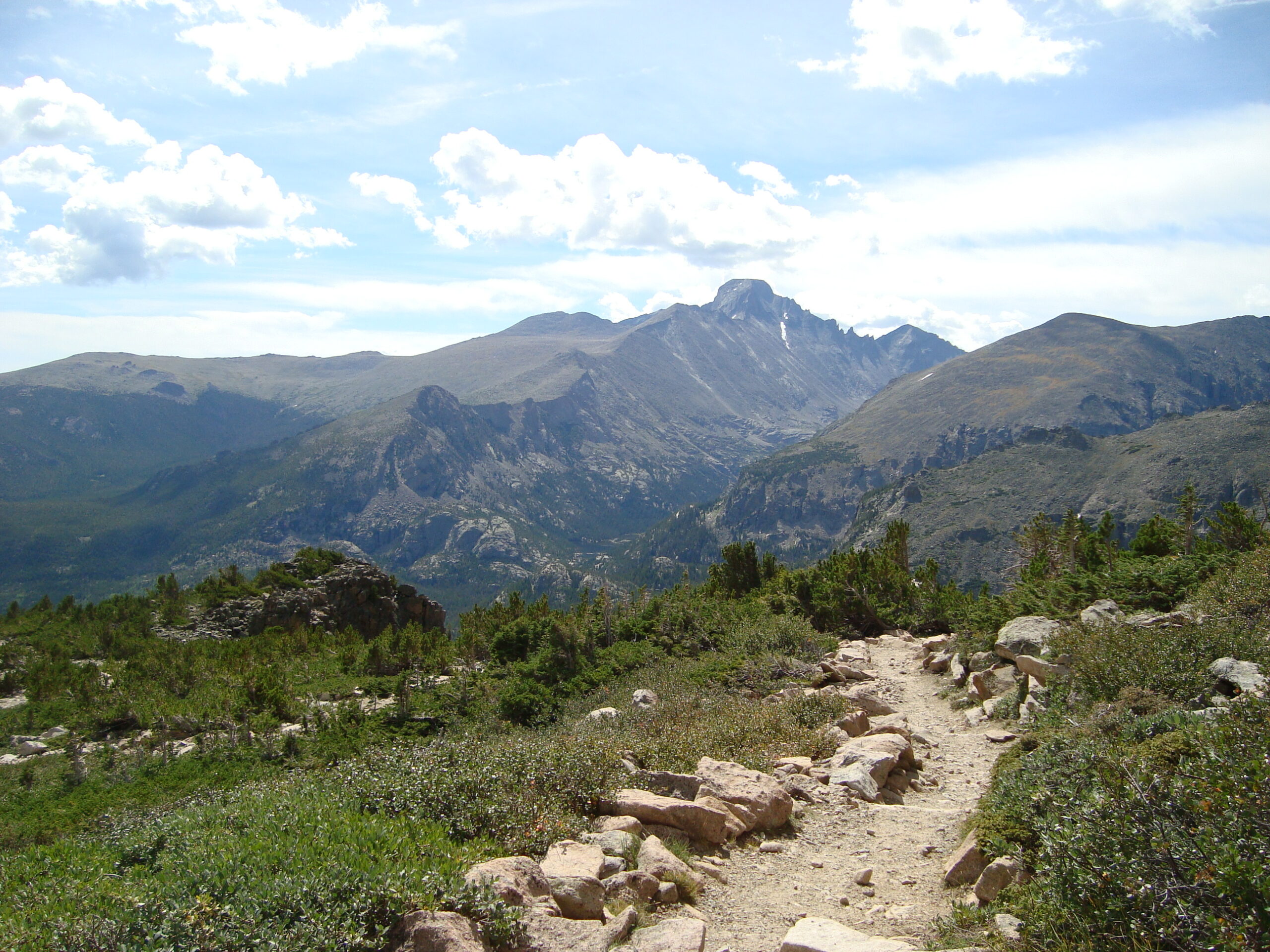
Top 5 Hiking Trails in Colorado
Colorado, fondly known as the Centennial State, is a paradise for outdoor enthusiasts. With its rugged mountains, expansive forests, and serene alpine lakes, it’s no wonder that hiking is one of the most popular activities here. Whether you’re seeking challenging ascents to towering peaks or leisurely walks through breathtaking valleys, Colorado’s diverse terrain offers something for everyone. In this comprehensive guide, we’ll delve deeper into the top five hiking trails in Colorado, providing detailed insights to help you plan your next adventure.
1. Maroon Bells Scenic Loop

Situated about 10 miles west of Aspen, the Maroon Bells Scenic Loop is an iconic destination that captures the essence of Colorado’s natural beauty. The Maroon Bells are two peaks—Maroon Peak and North Maroon Peak—both towering over 14,000 feet and known for their distinctive bell shape and maroon coloring derived from mudstone.
Access to the trailhead is via Maroon Creek Road, which during the summer months requires visitors to use a shuttle service from Aspen Highlands due to high traffic and limited parking. This policy helps preserve the delicate environment and reduces congestion. The loop itself is a 1.9-mile trail that circumnavigates Maroon Lake, offering unparalleled views of the peaks reflected in the calm waters, especially during sunrise and sunset when the alpenglow paints the mountains in hues of pink and orange.
The trail meanders through fields of wildflowers, groves of aspen trees that turn golden in the fall, and offers chances to spot wildlife like mule deer, foxes, and a variety of bird species. Interpretive signs along the path provide information about the local ecology, geology, and history, enriching your hiking experience. The relatively flat and well-maintained path makes it accessible for hikers of all levels, including families with young children.
For those looking to extend their hike, the area serves as a gateway to the Maroon Bells-Snowmass Wilderness, featuring longer trails like the Crater Lake Trail and the challenging Four Pass Loop. Before planning your visit, check the Aspen Chamber Resort Association website for shuttle schedules, parking regulations, and any necessary permits. Ensuring you’re well-informed will make your trip to one of the best hiking trails in Colorado both enjoyable and stress-free.
Additionally, consider exploring our detailed guide on Colorado Summer Adventures to discover other activities in the Aspen area, such as mountain biking, river rafting, and scenic drives.
2. Mount Elbert Trail

Mount Elbert, part of the Sawatch Range, stands as the highest point in Colorado and the Rocky Mountains. Located near the historic town of Leadville, the Mount Elbert Trail offers a challenging yet rewarding experience for hikers aiming to conquer a “fourteener”—a mountain peak exceeding 14,000 feet.
There are several routes to the summit, with the Northeast Ridge being the most popular. This 9-mile round-trip trail begins at the North Mount Elbert Trailhead, accessible via Halfmoon Road. The trail starts in a dense lodgepole pine forest before ascending above the tree line into alpine tundra, where the terrain becomes steeper and rockier. The elevation gain is significant—about 4,700 feet—so hikers should be in good physical condition and acclimated to high altitudes to prevent altitude sickness.
The summit provides 360-degree panoramic views of the surrounding peaks, valleys, and Twin Lakes to the southeast. On clear days, you can see as far as the San Juan Mountains to the south and the Front Range to the east. Due to the mountain’s prominence, weather conditions can change rapidly. It’s advisable to start your hike early in the morning, typically around dawn, to avoid afternoon thunderstorms and to ensure ample daylight for your descent.
Wildlife enthusiasts may encounter creatures adapted to high altitudes, such as pikas, marmots, and occasionally, mountain goats. The flora transitions from subalpine forests to fragile alpine plants and wildflowers, reminding hikers to stay on designated paths to protect the sensitive environment. Camping is permitted in the national forest areas surrounding the trail, offering an opportunity to immerse yourself fully in Colorado’s wilderness.
For practical advice on preparing for this strenuous hike, including gear recommendations and acclimatization tips, refer to our article on High-Altitude Hiking Preparation. Remember, safety is paramount when tackling one of the highest and best hiking trails in Colorado.
3. Hanging Lake Trail

Hanging Lake is a geological wonder located in Glenwood Canyon, approximately 7 miles east of Glenwood Springs. The Hanging Lake Trail is a steep 1.2-mile ascent (2.4 miles round-trip) that leads hikers to a pristine lake renowned for its turquoise waters and cascading waterfalls. The lake sits on a travertine ledge, giving it a “hanging” appearance and contributing to its unique ecosystem.
To preserve this fragile environment, the U.S. Forest Service has implemented a permit system limiting the number of daily visitors. Permits can be purchased online through the Hanging Lake Visitor Guide, and during peak season, a shuttle service operates from Glenwood Springs to the trailhead. This management strategy helps maintain the trail’s condition and the lake’s water quality, ensuring that Hanging Lake remains one of the best hiking trails in Colorado for future generations.
The trail itself follows Dead Horse Creek, featuring several footbridges and resting spots where hikers can appreciate the lush vegetation and the sounds of flowing water. The path is rocky and includes a series of steep switchbacks, culminating in a final ascent up a staircase carved into the canyon wall. The effort is rewarded with a breathtaking view of Hanging Lake, where travertine formations create a natural dam, and water spills gently over moss-covered rocks into the crystal-clear pool below.
Swimming, fishing, and walking on the logs near the lake are prohibited to protect the delicate ecosystem. However, photography is encouraged, and the site offers ample opportunities for stunning nature shots. Just a short distance above Hanging Lake is Spouting Rock, a waterfall that bursts directly from a cliff face, which is accessible via a short trail and provides a refreshing mist on hot summer days.
When planning your trip, consider the seasonal variations. Spring brings vibrant greenery and roaring waterfalls, while fall offers a tapestry of autumn colors. For responsible hiking practices and tips on how to minimize your environmental impact, read our guide on Responsible Hiking Tips. Your cooperation ensures that this natural treasure remains unspoiled.
4. Garden of the Gods Loop

The Garden of the Gods is a public park and National Natural Landmark located in Colorado Springs, easily accessible and open year-round. The park spans over 1,300 acres and is famed for its dramatic red sandstone rock formations that date back 300 million years. The juxtaposition of the towering rocks against the backdrop of Pikes Peak creates a stunning landscape that attracts photographers, hikers, and geology enthusiasts alike.
The Perkins Central Garden Trail is a 1.5-mile paved loop that takes you through the heart of the park’s most impressive formations, such as Kissing Camels and Balanced Rock. The trail is wheelchair and stroller accessible, making it suitable for visitors of all ages and abilities. Informational plaques along the path offer insights into the geological history, the indigenous peoples who once inhabited the area, and the local flora and fauna.
Beyond the central trail, the park offers over 15 miles of trails ranging from easy walks to moderate hikes. The Siamese Twins Trail provides a unique vantage point of Pikes Peak framed by a natural window in the rocks. For a more secluded experience, the Palmer Trail loops around less-visited areas, allowing you to explore the park’s natural beauty away from the crowds.
Admission to the park is free, thanks to the stipulations in the original land donation by the Perkins family. The on-site Visitor & Nature Center offers interactive exhibits, a gift shop, and a café with panoramic views. Educational programs and guided walks are available, enhancing your understanding of why this area is considered one of the best hiking trails in Colorado.
After exploring the Garden of the Gods, you might consider extending your adventure to nearby attractions. The Pikes Peak region offers opportunities for cog railway rides, mountain biking, and exploring the historic Manitou Springs. For more ideas on making the most of your visit, see our itinerary suggestions in Colorado Springs Travel Guide.
5. The Keyhole Route on Longs Peak

Longs Peak is the crown jewel of Rocky Mountain National Park, located about 9 miles south of Estes Park. The Keyhole Route is a classic mountaineering route that attracts experienced hikers from around the world. Standing at 14,259 feet, Longs Peak offers a strenuous 15-mile round-trip hike with an elevation gain of 5,100 feet, making it one of the most challenging and best hiking trails in Colorado.
The journey begins at the Longs Peak Trailhead, where hikers are advised to start as early as 2 or 3 a.m. to avoid afternoon storms and to ensure sufficient time for the ascent and descent. The trail progresses through pine and aspen forests before reaching the Alpine Brook area and the Boulder Field, a vast expanse of rocks that requires careful navigation. The Keyhole itself is a notch in the ridge that provides a gateway to the more technical portions of the climb.
Beyond the Keyhole, the route becomes significantly more demanding, with sections like the Ledges, the Trough, the Narrows, and the Homestretch requiring scrambling over exposed areas with steep drop-offs. These sections are not recommended for those with a fear of heights or inexperienced in high-altitude hiking. Weather conditions, including ice, snow, and sudden storms, can make the route treacherous even in the summer months.
The summit offers an expansive view of the Rockies, a reward that many find worth the effort. Due to the risks involved, it’s crucial to check weather forecasts, trail conditions, and to inform someone of your plans before attempting the hike. The National Park Service provides up-to-date information and strongly advises against solo attempts.
Accommodations near the trailhead include campsites like the Goblins Forest, but reservations are required and fill up quickly during peak season. For those interested in less strenuous hikes, Rocky Mountain National Park offers over 350 miles of trails ranging from easy nature walks to challenging backcountry treks.
Before you set out, equip yourself with knowledge from our comprehensive guide on Extreme Hiking Safety Tips. Proper preparation, including physical conditioning, appropriate gear, and situational awareness, is essential for a safe and successful ascent of Longs Peak.
Conclusion
Colorado’s vast and varied landscapes make it a premier destination for hikers seeking both adventure and tranquility. From the reflective waters of Maroon Bells to the challenging heights of Longs Peak, the state’s trails offer experiences that cater to all levels of hikers. Each trail not only provides an opportunity to connect with nature but also a chance to learn about the rich ecological and geological history of the region.
As you embark on these trails, remember the principles of Leave No Trace to preserve the beauty and integrity of these natural spaces. Whether you’re capturing the perfect photograph, summiting a fourteener, or simply enjoying the fresh mountain air, Colorado’s trails are sure to leave a lasting impression.
For more detailed guides, gear reviews, and travel tips, stay connected with us at BoardingArea. We’re here to help you make the most of your outdoor adventures. Happy hiking!






























